Cardio Workouts for Fat Loss
Did you know that running can burn up to 965 calories in just one hour? That’s like saying goodbye to a large slice of pizza without even stepping into a gym. Cardio exercise is one of the most effective ways to kickstart your fat loss journey, and the best part? You don’t need fancy equipment or a gym membership to get started.
Whether you’re marching in place, jogging around your living room, or dancing to your favorite tunes, cardio workouts can be done right at home. This article is packed with expert tips and a variety of routines to help you find what works best for your fitness level. From high-energy moves to low-impact options, there’s something for everyone.
Choosing the right routine is key. You’ll learn how to plan your workouts, track your progress, and stay motivated. Ready to take that first step? Let’s get moving and make fat loss fun and achievable!
Why Cardiovascular Exercise is Essential for Fat Loss
Ever wondered why so many fitness experts swear by cardiovascular exercise for fat loss? It’s not just about breaking a sweat—it’s about transforming your body and health. Cardiovascular exercise, or cardio, is a cornerstone of any effective fat-loss plan. It boosts your heart health, burns calories, and even supports joint stability.
Overall Health Benefits
Cardiovascular exercise does more than help you lose fat. It strengthens your heart, improves blood circulation, and enhances lung function. According to the American Heart Association, just 150 minutes of moderate-intensity cardio per week can significantly reduce the risk of heart disease.
Regular cardio also supports mental health. It releases endorphins, which can improve mood and reduce stress. Plus, it’s great for joint health. Activities like jogging or dancing can strengthen the muscles around your knees, providing better stability and reducing injury risk.
Calorie-Burning Explained
At its core, fat loss comes down to burning more calories than you consume. Cardiovascular exercise is a calorie-burning powerhouse. For example, a 160-pound person can burn around 606 calories in an hour of running. Even lower-impact activities like dancing or brisk walking can torch significant calories.
Here’s a breakdown of calorie burn for different activities:
| Activity | Calories Burned (1 Hour) |
|---|---|
| Running (5 mph) | 606 |
| Dancing | 219 |
| Brisk Walking (3.5 mph) | 314 |
| Swimming | 423 |
Consistency is key. Incorporating cardio into your routine several times a week can lead to steady fat loss over time. Plus, it’s a fun way to stay active and healthy!
Whether you’re jogging, dancing, or swimming, cardiovascular exercise is a versatile and effective way to achieve your fat-loss goals. Start small, stay consistent, and watch the results add up!
Understanding the Science Behind Cardio-Workouts
What makes one workout burn more calories than another? It’s all in the science. The intensity and duration of your exercise play a huge role in how effective it is for fat loss. Whether you’re sprinting or taking a leisurely walk, understanding these factors can help you maximize your results.
The Role of Intensity and Duration
Intensity is how hard you’re working during a workout. Duration is how long you keep it up. Together, they determine how many calories you burn. For example, a 30-minute run at a high intensity can torch more calories than an hour-long stroll. It’s all about finding the right balance for your fitness level.
Leg movements and jumps are especially effective for calorie burn. Exercises like squats, lunges, and jump squats engage large muscle groups, which increases your metabolic rate. This means you’ll burn calories even after your workout is over.

To gauge your effort, use the Rate of Perceived Exertion (RPE). This scale ranges from 1 (easy) to 10 (max effort). Aim for a 6 or 7 if you’re a beginner, and push to an 8 or 9 as you get stronger. It’s a simple way to ensure you’re working hard enough without overdoing it.
Here’s a quick breakdown of how to adjust intensity:
- Beginners: Start with low-impact moves like brisk walking or light cycling. Gradually increase intensity as you build stamina.
- Advanced: Incorporate high-intensity intervals, like sprinting or burpees, to challenge your body and boost calorie burn.
Remember, consistency is key. Whether you’re focusing on leg strength or adding jumps to your routine, staying active regularly will help you achieve your fat-loss goals. Science is on your side—use it to your advantage!
Effective Cardio-Workouts for Beginners
Starting your fitness journey doesn’t have to be intimidating—begin with simple moves that anyone can do. Whether you’re new to exercise or just getting back into it, these beginner-friendly routines will help you build confidence and stamina.
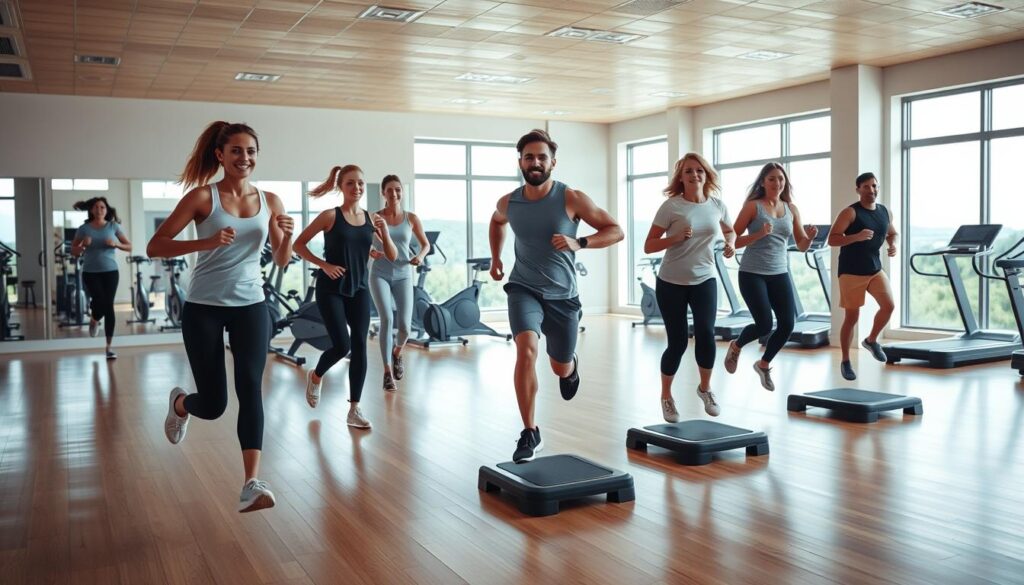
Simple Starter Moves
Marching in place might sound simple, but it’s a great way to get your heart pumping without leaving your living room. Add some arm movements by swinging them naturally as you march. This engages your upper body and makes the workout more effective.
Dancing to your favorite music is another fun option. It’s a low-pressure way to move your body and burn calories. Plus, it’s hard to feel stressed when you’re grooving to a great beat!
Here are a few beginner-friendly exercises to try:
- Marching in Place: Keep your arms moving to engage your upper body.
- Light Dancing: Let loose and enjoy the rhythm while burning calories.
- Brisk Walking: A simple way to get your heart rate up without overdoing it.
Focus on your body positioning to avoid injuries. Stand tall, keep your core engaged, and move smoothly. Even small movements can make a big difference over time.
Spend a short amount of time on each activity to build endurance gradually. Start with 10-15 minutes and work your way up. Consistency is key—doing these exercises regularly will pave the way for more advanced workouts later.
Remember, the goal is to have fun and stay active. With these simple starter moves, you’ll be on your way to a healthier, stronger you in no time!
High-Intensity Interval Training: Maximizing Workout Efficiency
Short on time but still want results? High-Intensity Interval Training is here to help. HIIT is a workout style that alternates between short bursts of intense effort and brief recovery periods. It’s a game-changer for fat loss and fitness.
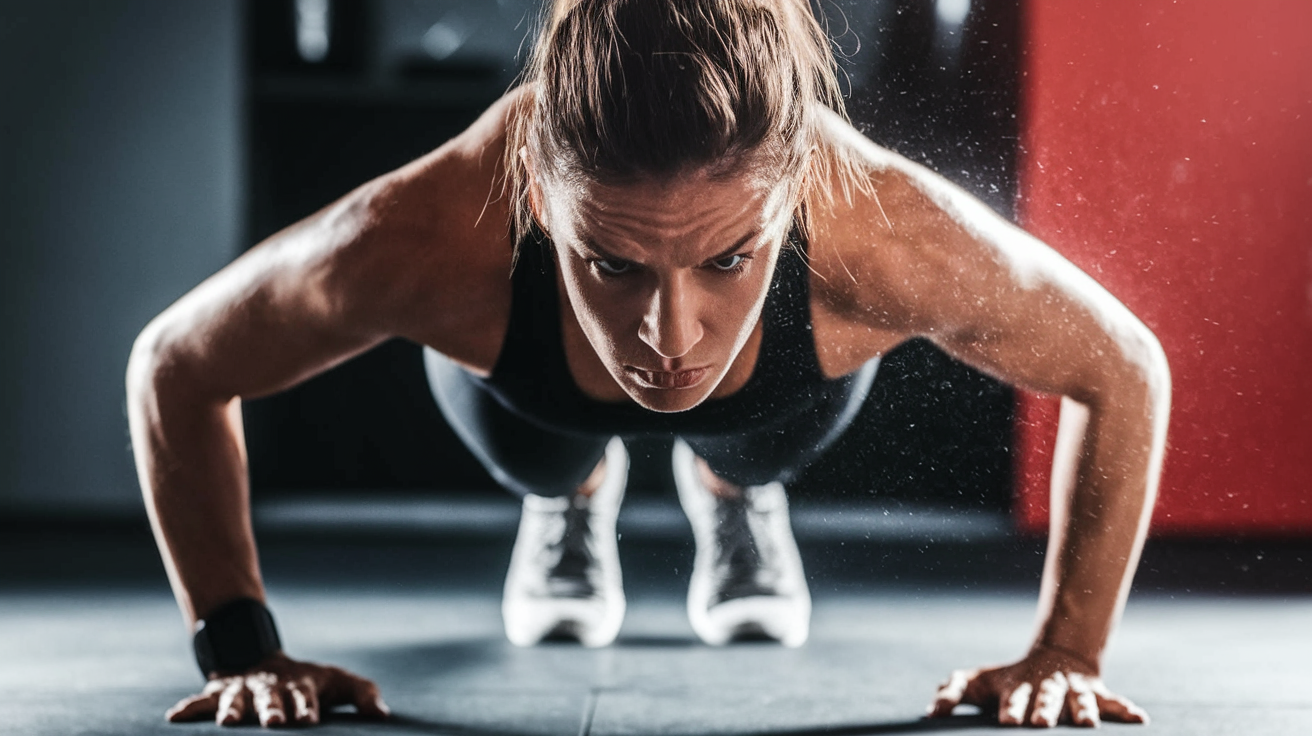
What is HIIT?
HIIT stands for High-Intensity Interval Training. It’s all about pushing your limits for a short time, then taking a breather. For example, you might sprint for 30 seconds, then walk for 1 minute. Repeat this cycle for 20-30 minutes, and you’ve got a full workout.
This method is super efficient. According to Nike.com, HIIT lets you burn more calories in less time while boosting your aerobic capacity. It’s perfect for busy schedules.
Benefits of HIIT
HIIT isn’t just fast—it’s effective. Here’s why:
- Calorie Burn: HIIT torches calories during and after your workout. Your body keeps burning fat even when you’re done.
- Heart Health: It improves cardiovascular function, making your heart stronger and healthier.
- Muscle Engagement: Moves like squats and jumps work your core, hips, and legs, building strength and endurance.
Here’s a quick look at how HIIT compares to traditional workouts:
| Workout Type | Duration | Calories Burned |
|---|---|---|
| HIIT | 20-30 minutes | 250-400 |
| Jogging | 60 minutes | 400-500 |
| Cycling | 45 minutes | 300-400 |
HIIT is also adaptable. Beginners can start with lower-intensity moves like modified squats or light jumps. Advanced exercisers can add burpees or mountain climbers for an extra challenge.
Whether you’re new to fitness or a seasoned pro, HIIT offers a flexible, efficient way to reach your goals. Give it a try and see the difference!
At-Home Cardio Exercises with Minimal Equipment
Who says you need a gym to get your heart pumping? You can achieve a great workout right at home with little to no equipment. Whether you’re short on time or just prefer the comfort of your living room, these exercises are a simple way to stay active and burn calories.
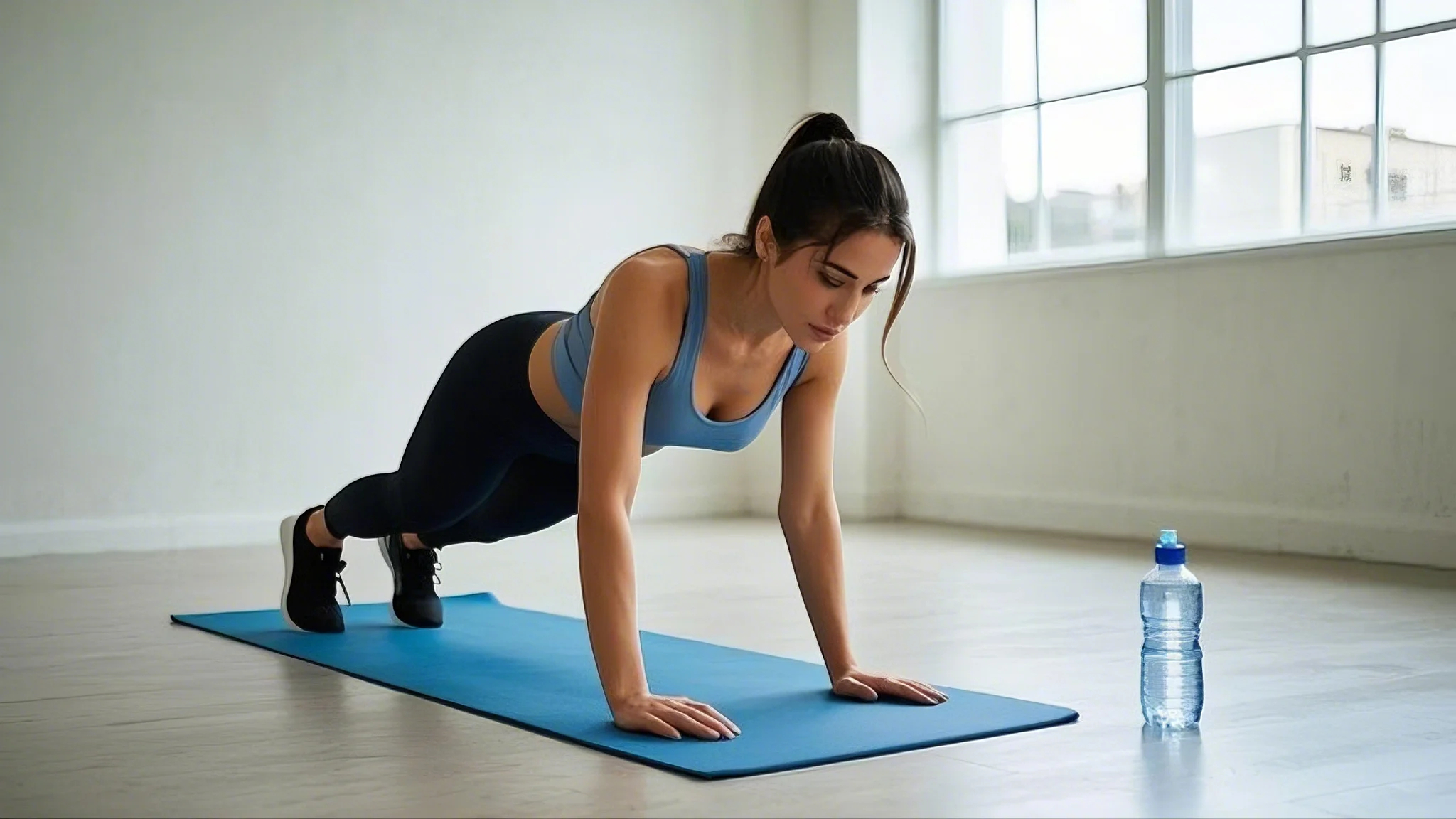
No-Equipment Options
Jumping jacks are a classic. They get your heart rate up and work your entire body in just a few minutes. Another great option is stair climbs. If you have stairs at home, use them! It’s an easy way to add intensity to your routine.
Dynamic movements like high knees or butt kicks are also effective. These exercises are quick, fun, and require zero equipment. Even a short burst of these can make a big difference over time.
Here are a few more no-equipment exercises to try:
- Mountain Climbers: Great for core strength and cardio.
- Burpees: A full-body move that’s perfect for high-intensity intervals.
- Air Squats: Focus on form to engage your legs and core.
Consistency is key. Even 10 minutes of these movements daily can lead to noticeable results. Find what works for you and stick with it!
Safety Tips for Home Workouts
Before you start, make sure your space is safe. Clear any obstacles to avoid tripping or bumping into furniture. Wear comfortable shoes to support your feet during high-impact moves.
Listen to your body. If something feels off, modify the exercise or take a break. Staying hydrated is also important—keep a water bottle nearby.
Here are a few more tips to keep in mind:
- Warm-Up: Spend a few minutes stretching or doing light movements to prepare your body.
- Cool Down: End your workout with gentle stretches to prevent soreness.
- Pace Yourself: Start slow and gradually increase intensity as you build stamina.
Working out at home doesn’t have to be complicated. With these tips and exercises, you can create a routine that fits your lifestyle and keeps you moving toward your goals.
Bodyweight Exercises that Boost Cardiovascular Endurance
Want to boost your heart health without stepping foot in a gym? Bodyweight exercises are your answer. These moves not only strengthen your muscles but also get your heart pumping. Best of all, you don’t need any equipment—just your own body weight and a little space.

Maintaining the right position is crucial. It ensures you get the most out of each movement in just a few seconds. Whether you’re a beginner or a pro, these exercises can be adjusted to match your fitness level.
Key Bodyweight Movements
Here are some effective bodyweight exercises that double as cardio boosters:
- Push-Ups: Great for upper body strength and core engagement. Keep your body in a straight line for maximum benefit.
- Squats: Targets your legs and glutes. Focus on keeping your knees aligned with your toes to avoid strain.
- Lunges: Works your legs and improves balance. Step forward with one leg and lower your hips until both knees are at 90 degrees.
These movements not only strengthen your core but also improve overall balance. For an extra challenge, try adding variations like jump squats or incline push-ups.
Integrating these exercises into your routine is simple. Start with 30–60 seconds of each move and complete 2–3 rounds. Over time, you’ll notice improvements in both strength and endurance.
Remember, consistency is key. Stick with it, and you’ll see results in no time!
Breaking Down Cardio Movements: From Jump Rope to Stair Climb
Mastering the basics of cardio movements can make all the difference in your workout results. Whether you’re jumping rope or climbing stairs, proper technique ensures you stay injury-free and get the most out of every session. Let’s break down some popular exercises and how to do them right.

Technique Breakdown
Starting with jump rope, it’s all about rhythm and control. Keep your elbows close to your sides and use your wrists to spin the rope. Land softly on the balls of your right foot to reduce impact on your joints. This simple adjustment can protect your knees and ankles while keeping your heart rate up.
For stair climbing, focus on posture. Keep your back straight and engage your core as you step up. Push through your heel, not your toes, to activate your glutes and hamstrings. This technique not only boosts efficiency but also minimizes strain on your lower body.
When it comes to lunges, alignment is key. Step forward with one leg, ensuring your knee doesn’t extend past your toes. Lower your hips until both knees form 90-degree angles. This movement strengthens your legs while improving balance and stability.
Here are some tips to keep in mind:
- Maintain Proper Posture: Whether you’re jumping or climbing, keep your spine neutral and your core engaged.
- Land Softly: Avoid hard landings to protect your joints. Focus on controlled movements.
- Warm Up First: Prepare your body with light stretches or a quick walk to reduce injury risk.
Common mistakes include overextending your knees during lunges or leaning too far forward while climbing stairs. These errors can lead to discomfort or injury. By focusing on form, you’ll not only perform better but also enjoy a safer workout.
For more inspiration, check out this guide on the diverse range of cardio exercises that cater to all fitness levels. Remember, mastering these movements takes practice, but the results are worth it!
Monitoring Your Progress: Utilizing RPE and Heart Rate Zones
Ever wondered how to measure your effort during a workout without fancy gadgets? The Rate of Perceived Exertion (RPE) scale and heart rate zones are your go-to tools. These methods help you track your progress and ensure you’re working at the right intensity.
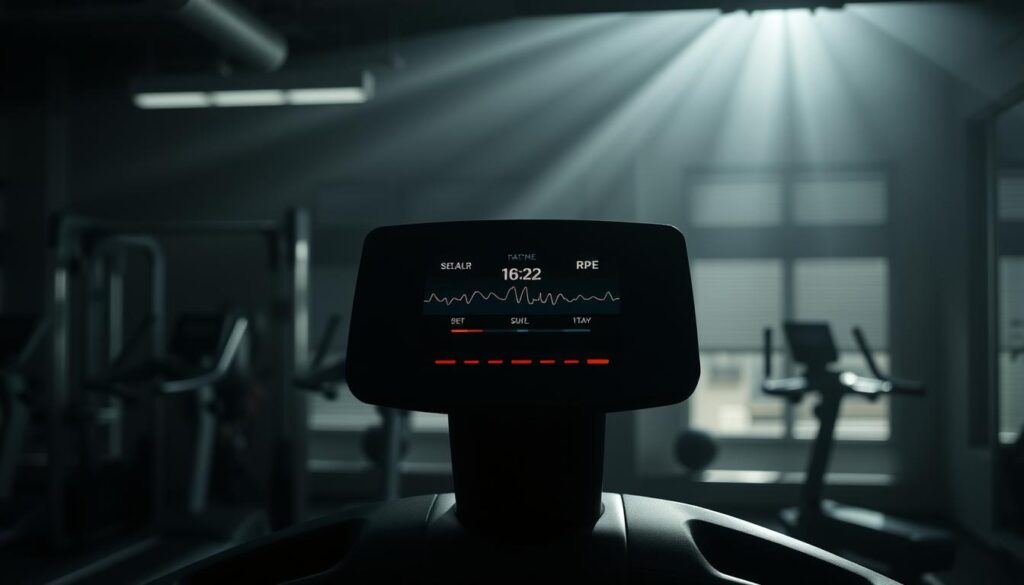
Understanding Rate of Perceived Exertion
The RPE scale is a simple way to gauge how hard you’re working. It ranges from 1 to 10, where 1 is no effort and 10 is maximum effort. For example, a brisk walk might feel like a 3, while sprinting could be an 8 or 9.
Here’s how to use it:
- Light Effort (1-3): Easy activities like walking or stretching.
- Moderate Effort (4-6): Activities that make you breathe harder, like jogging.
- High Effort (7-10): Intense exercises like sprinting or HIIT.
Small changes in effort on either side of the spectrum can make a big difference. For instance, increasing your jogging pace from a 5 to a 6 can boost calorie burn without overexertion.
Heart Rate Zones: A Deeper Dive
Heart rate zones are another way to measure intensity. They’re based on a percentage of your maximum heart rate (MHR), which is roughly 220 minus your age. Here’s a quick breakdown:
- Zone 1 (50-60% MHR): Light activity, ideal for warm-ups.
- Zone 2 (60-70% MHR): Moderate effort, great for fat burning.
- Zone 3 (70-80% MHR): Hard effort, improves endurance.
Using a heart rate monitor can help you stay in the right zone for your goals. For example, staying in Zone 2 during a long run can improve aerobic fitness.
Practical Tools and Techniques
There are plenty of tools to help you track your progress. Fitness watches and apps can monitor your heart rate and RPE in real time. The “talk test” is another simple method. If you can talk but not sing, you’re likely in the moderate zone.
During intense workouts, pay attention to your shoulder and breathing alignment. Keep your shoulders relaxed and breathe deeply to avoid strain. Proper form ensures you get the most out of your training.
By combining RPE and heart rate zones, you can fine-tune your workouts and see steady progress. Start small, stay consistent, and watch your fitness improve!
Combining Cardio Movements into Effective Circuits
Ready to mix things up? Combining cardio movements into circuits is your ticket to a full-body burn. Circuits are a fantastic way to keep your heart rate up while targeting multiple muscle groups. Plus, they’re versatile—perfect for beginners and fitness pros alike.

Sample Circuit Routine
Here’s a simple yet effective circuit routine to get you started. Each exercise lasts 30–60 seconds, with a 30-second rest in between. This rate keeps your heart pumping while giving you enough time to catch your breath.
- Jump Squats: Great for your glutes and legs. Start with feet shoulder-width apart, squat down, then explode into a jump.
- Mountain Climbers: Targets your core and shoulders. Get into a plank position and alternate bringing your knees toward your chest.
- Push-Ups: Works your upper body and core. Keep your body in a straight line for maximum benefit.
- High Knees: A cardio powerhouse. Run in place, bringing your knees up to hip level.
Repeat this circuit 2–3 times for a complete workout. The alternating intensity levels keep things interesting and effective.
Why focus on your glutes? Strong glutes improve posture, reduce back pain, and enhance overall performance. Plus, they’re a key player in almost every movement you make.
Here’s a quick tip: If you’re new to circuits, start with fewer rounds and gradually increase as you build stamina. Modify exercises as needed—for example, do knee push-ups instead of full push-ups.
By combining these movements, you’ll not only burn calories but also build strength and endurance. It’s a win-win for your fitness goals!
Expert Tips and Tricks for a Successful Cardio Routine
Small tweaks to your cardio routine can lead to big results—here’s how. Experts agree that focusing on proper form and gradual progression is key to long-term success. Whether you’re a beginner or a seasoned pro, these tips will help you get the most out of every workout.
First, pay attention to how you move. Small adjustments, like keeping your core engaged or landing softly during jumps, can make a huge difference. For example, when jumping rope, use your wrists to spin the rope and land lightly on the balls of your feet. This reduces impact and keeps your joints safe.
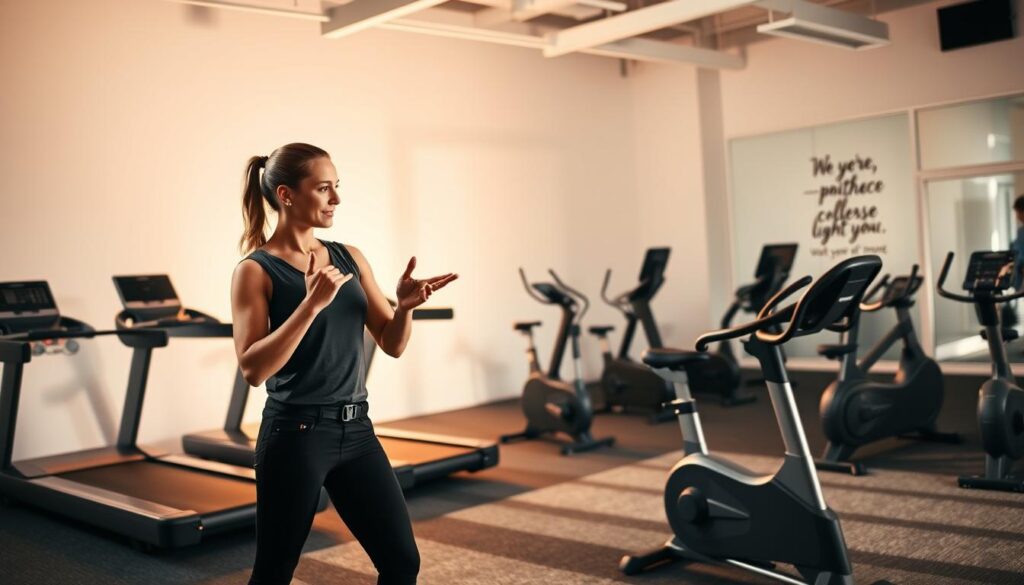
Next, focus on your air space. Breathing deeply and evenly helps maintain energy levels. Try inhaling through your nose and exhaling through your mouth during intense moves. This ensures your muscles get the oxygen they need to keep going.
Staying light on your stand foot is another game-changer. Whether you’re lunging or climbing stairs, shifting your weight properly improves balance and coordination. Push through your heel, not your toes, to engage the right muscles and avoid strain.
Mixing up your routine is also crucial. Try alternating between high-intensity intervals and steady-state cardio to keep things fresh. For example, pair jump squats with brisk walking or dancing. This prevents boredom and challenges your body in new ways.
Here are a few more expert-approved tips:
- Warm Up and Cool Down: Spend 5-10 minutes stretching or doing light movements to prepare your body and prevent injuries.
- Stay Hydrated: Keep a water bottle nearby, especially during longer sessions.
- Listen to Your Body: If something feels off, modify the exercise or take a break.
Finally, consistency is key. Aim for at least 30 minutes of moderate-intensity exercise most days of the week. Over time, these small changes will add up to big results. For more ideas on adding cardio to your routine, check out this helpful guide.
Remember, it’s not about speed or intensity—it’s about doing it right. Focus on form, stay consistent, and enjoy the journey to a healthier, stronger you!
Integrating Lower Body, Upper Body, and Core Movements
Ever thought about how a single workout can target your entire body? Combining movements that engage your lower body, upper body, and core is the secret to a balanced and effective routine. It’s like hitting three birds with one stone—except the birds are muscle groups, and the stone is your workout.
Targeting Major Muscle Groups
When you integrate exercises that work multiple muscle groups, you’re not just saving time—you’re maximizing results. For example, a squat with an overhead press engages your legs, shoulders, and core all at once. It’s a win-win for efficiency and effectiveness.
Here’s why this approach rocks:
- Enhanced Fitness: Working multiple muscle groups improves overall strength and endurance.
- Better Balance: Engaging your core during movements like lunges or planks improves stability.
- Calorie Burn: Compound exercises keep your heart rate up, making your workout a calorie-torching machine.
Small adjustments can make a big difference. For instance, aligning your toe properly during lunges ensures better form and reduces strain. It’s these little tweaks that elevate your performance.
Core Engagement: The Secret Sauce
Your core is more than just abs—it’s the powerhouse of your body. Exercises like planks, glute bridges, and dead bugs keep your core active and toned. Plus, a strong core supports your back and improves posture.
Here’s a quick tip: During planks, focus on keeping your body in a straight line. This simple adjustment maximizes core engagement and prevents injury.
Compound Exercises to Try
Ready to put it all together? Here are some compound exercises that work multiple muscle groups:
- Burpees: A full-body move that combines squats, push-ups, and jumps.
- Mountain Climbers: Great for your core, shoulders, and legs.
- Lunges with a Twist: Add a torso twist to engage your core and improve balance.
For a structured approach, consider the upper/lower split. This method divides workouts into upper-body and lower-body days, ensuring balanced training and recovery.
Remember, consistency is key. Start with simple moves, gradually increase intensity, and watch your fitness soar. A balanced routine isn’t just about looking good—it’s about feeling strong, healthy, and ready to take on the world!
Advanced Cardio Moves for a Greater Challenge
Ready to take your fitness to the next level? Advanced cardio moves are here to challenge you. These exercises are designed to push your limits, boost calorie burn, and improve strength and coordination. Whether you’re a seasoned athlete or just looking to spice up your routine, these moves will keep you on your toes—literally.
Power Moves: Burpees & Mountain Climbers
Burpees and mountain climbers are two of the most effective advanced cardio exercises. They combine strength, endurance, and speed for a full-body workout. Burpees start with a squat, transition into a plank, and finish with a jump. They’re a calorie-torching powerhouse that also builds upper body and core strength.
Mountain climbers are another great option. They target your core, shoulders, and legs while keeping your heart rate up. To maximize the burn, focus on maintaining a strong back and keeping your movements controlled. These moves are perfect for adding intensity to any circuit.
Dynamic Strength and Coordination
Advanced cardio moves aren’t just about burning calories—they’re about building dynamic strength and coordination. Exercises like jump squats and bear crawls challenge your balance and engage multiple muscle groups. For example, jump squats work your glutes, quads, and calves while improving explosive power.
When performing these moves, focus on your ground contact. Landing softly reduces impact on your joints and keeps you safe. Proper form is key to getting the most out of each exercise and preventing injuries.
Here’s how to incorporate these moves into your routine:
- Start Slow: If you’re new to advanced moves, begin with modified versions. For example, do step-back burpees instead of full burpees.
- Focus on Form: Keep your back straight and core engaged during mountain climbers and burpees.
- Build Endurance: Gradually increase the number of reps or time spent on each exercise.
Advanced cardio moves are a fantastic way to challenge your body and see real results. Just remember to listen to your body and progress at your own pace. With consistency and proper technique, you’ll be crushing these exercises in no time!
Adapting Cardio Workouts for Different Fitness Levels
Not all workouts are created equal—adapting them to your fitness level can make all the difference. Whether you’re just starting out or pushing for advanced goals, tailoring your routine ensures you stay safe, motivated, and effective.
One of the simplest ways to adapt is by using minimal equipment. For example, a resistance band can add intensity to squats, while a chair can help with balance during lunges. Even without fancy gear, small changes can make a big impact.
Modifying movements is another game-changer. How you place hand or adjust your stance can transform an exercise. For instance, placing your hands on your hips during squats can help with balance, while raising them overhead increases difficulty.
Here’s a quick guide to modifying common exercises:
| Exercise | Beginner Modification | Advanced Variation |
|---|---|---|
| Squats | Use a chair for support | Add a jump at the top |
| Push-Ups | Do them on your knees | Elevate your feet |
| Lunges | Hold onto a wall | Add a twist at the bottom |
Progression is key. Start with basic moves and gradually increase intensity. For example, begin with marching in place, then move to high knees, and eventually add jumps. This approach builds strength and confidence over time.
Every fitness journey is unique. Experiment with different variations to find what works best for you. Remember, the goal isn’t perfection—it’s progress. Keep it fun, stay consistent, and watch your fitness soar!
Cardio-Workouts to Transform Your Home Exercise Routine
Looking to shake up your home workout routine? Cardio can be your secret weapon. With a little creativity, you can get heart-pumping results without stepping outside. The key is variety—mixing up your moves keeps things fresh and challenging.
Start with simple exercises like standing marches or high knees. These moves are easy to do but effective at raising your heart rate. Add in some jumps or dancing to your favorite playlist for an extra boost. The more fun you have, the more likely you are to stick with it.
Having plenty of options is crucial. Rotate between different exercises to target various muscle groups and prevent boredom. For example, one day you might focus on lower-body moves like squats and lunges. The next, try upper-body exercises like push-ups or mountain climbers.
Experts recommend incorporating high-intensity intervals for maximum impact. Alternate between 30 seconds of intense effort and 30 seconds of rest. This approach not only burns calories but also keeps your routine exciting.
Small changes can lead to big improvements. Switch up your environment by moving to a different room or adding music. Even a new pair of workout shoes can make a difference. The goal is to keep your routine fresh and motivating.
Remember, consistency is key. Aim for at least 30 minutes of cardio most days of the week. Over time, these small tweaks will transform your home workouts and your fitness level. Get creative, stay active, and enjoy the journey!
Tracking Progress and Evolving Your Cardio Routine
Tracking your fitness progress is like having a roadmap to success—it keeps you on the right path. Whether you’re a beginner or a seasoned athlete, measuring your improvements helps you stay motivated and make smarter adjustments. From monitoring your heart rate to fine-tuning your foot-hip alignment, every detail matters.
Progress Metrics and Adjustments
One of the easiest ways to track progress is by monitoring your heart rate. According to the American Heart Association, staying within your target heart rate zone ensures you’re working hard enough without overdoing it. For example, beginners should aim for 50-60% of their maximum heart rate, while advanced exercisers can push to 70-85%.
Tools like fitness watches or apps can make tracking easier. They provide real-time feedback on your heart rate, calories burned, and even recovery time. The “talk test” is another simple method—if you can talk but not sing, you’re likely in the moderate zone.
Small adjustments based on feedback can fine-tune your performance. For instance, noticing how your foot-hip alignment changes during lunges can improve form and reduce strain. Proper alignment ensures you’re engaging the right muscles and avoiding injuries.
Here are some tips for setting realistic goals and measuring success:
- Start Small: Set achievable milestones, like increasing your workout time by 5 minutes each week.
- Track Consistently: Use a journal or app to log your progress and celebrate small wins.
- Adjust Gradually: Increase intensity or duration by 10% each week to avoid plateaus.
For more detailed guidance on progression, check out these training guidelines from HPRC. They emphasize the importance of gradual increases in intensity and volume to achieve long-term results.
Remember, progress isn’t just about numbers—it’s about how you feel. Small, incremental changes lead to big improvements over time. Stay consistent, track your progress, and watch your fitness soar!
Wrapping Up Your Journey to a Healthier Heart
Your heart is your body’s engine—keep it running smoothly with the right moves. From jumping jacks to maintaining your hips hip-width apart, small adjustments can make a big difference. Consistency is key, and adapting your routine ensures long-term success.
Remember, proper form isn’t just about looking good—it’s about staying safe and effective. Exercises like jumping jacks are simple yet powerful, while keeping your hips hip-width apart during squats or lunges protects your joints and boosts results.
Cardio isn’t just about burning calories; it’s about building a stronger, healthier heart. Whether you’re a beginner or a pro, staying active and tracking your progress keeps the journey fun and sustainable. Mix it up, stay consistent, and enjoy the process!
Ready for more tips? Keep exploring and let your fitness journey evolve. Your heart will thank you!
